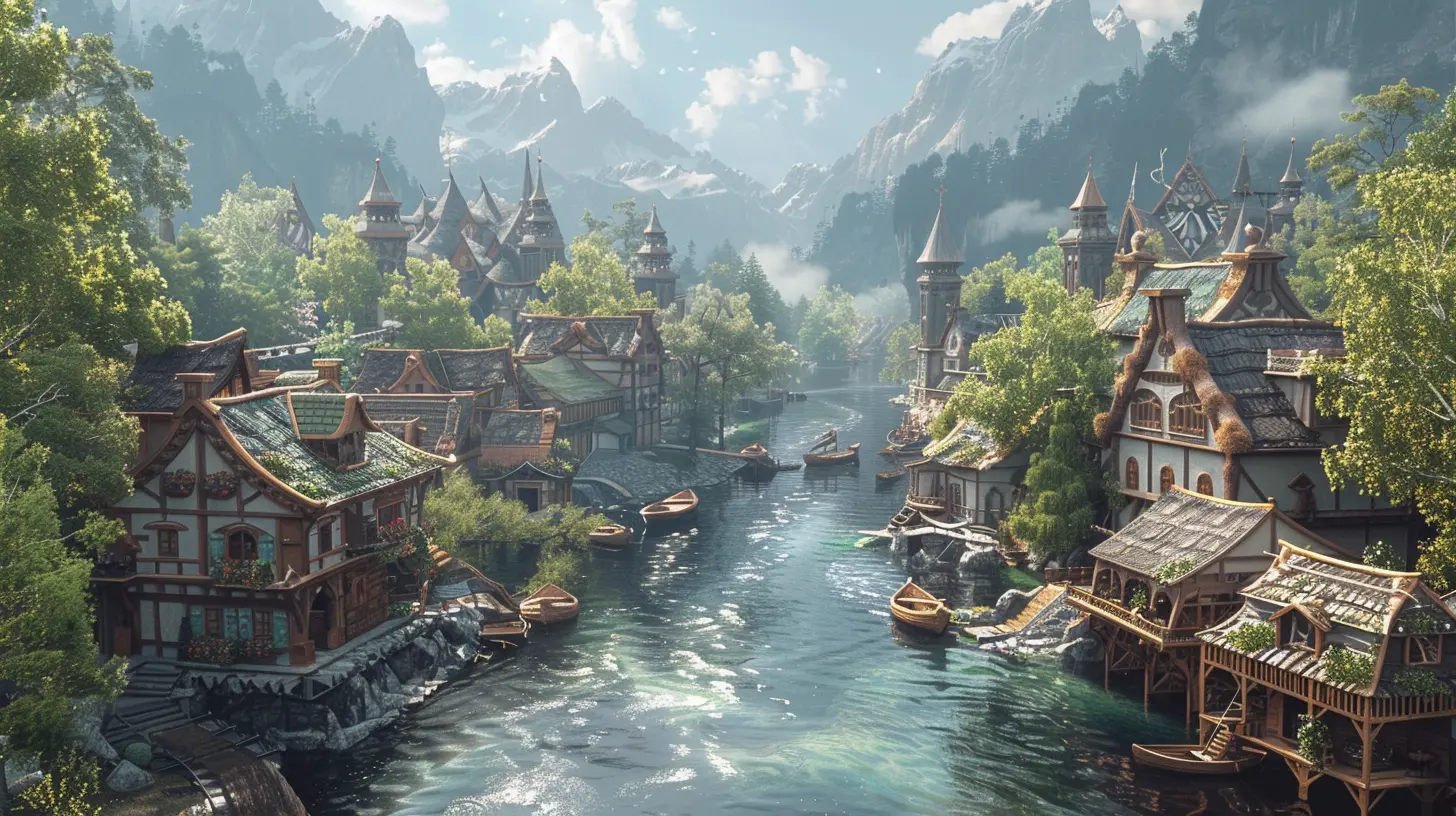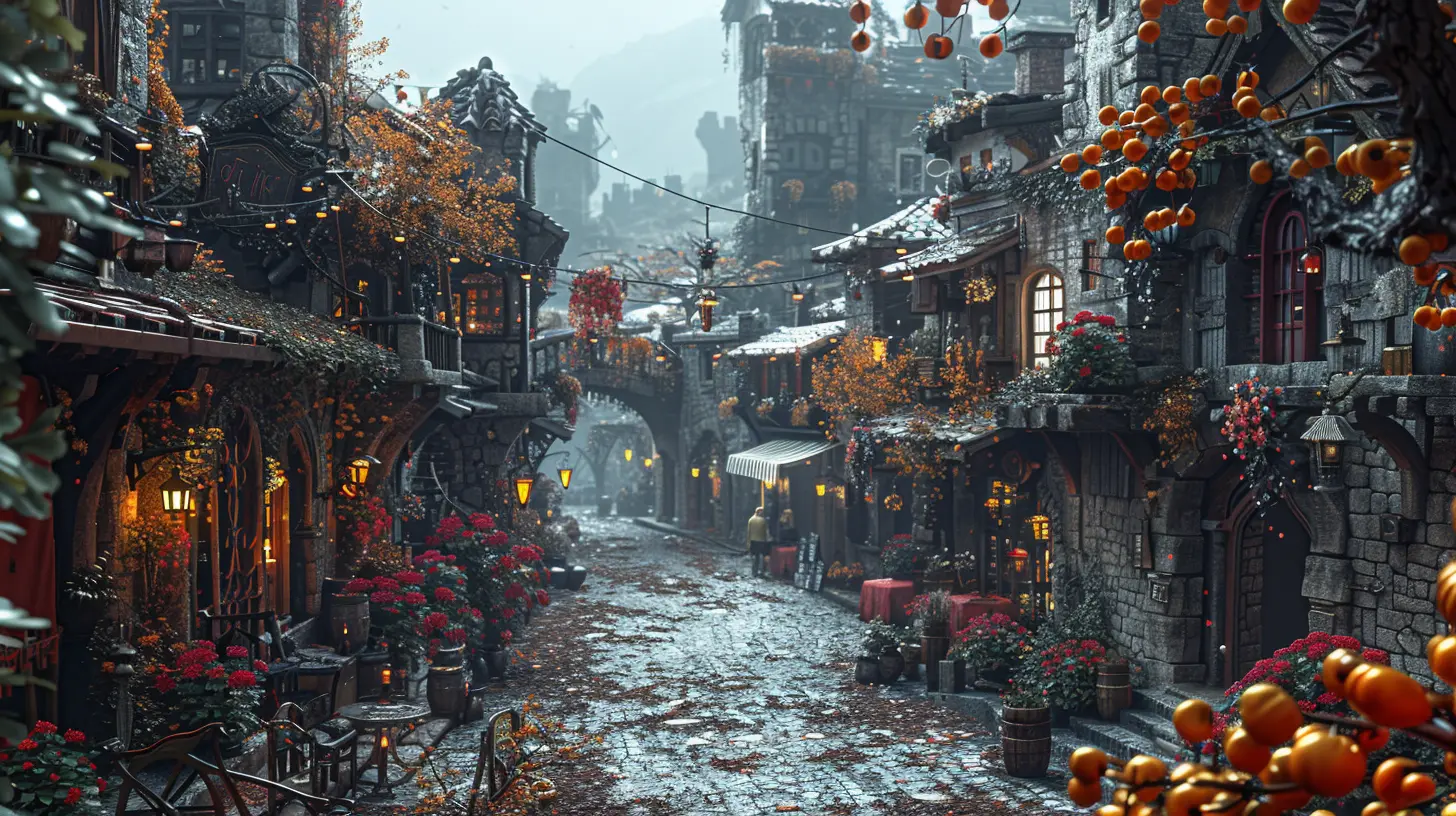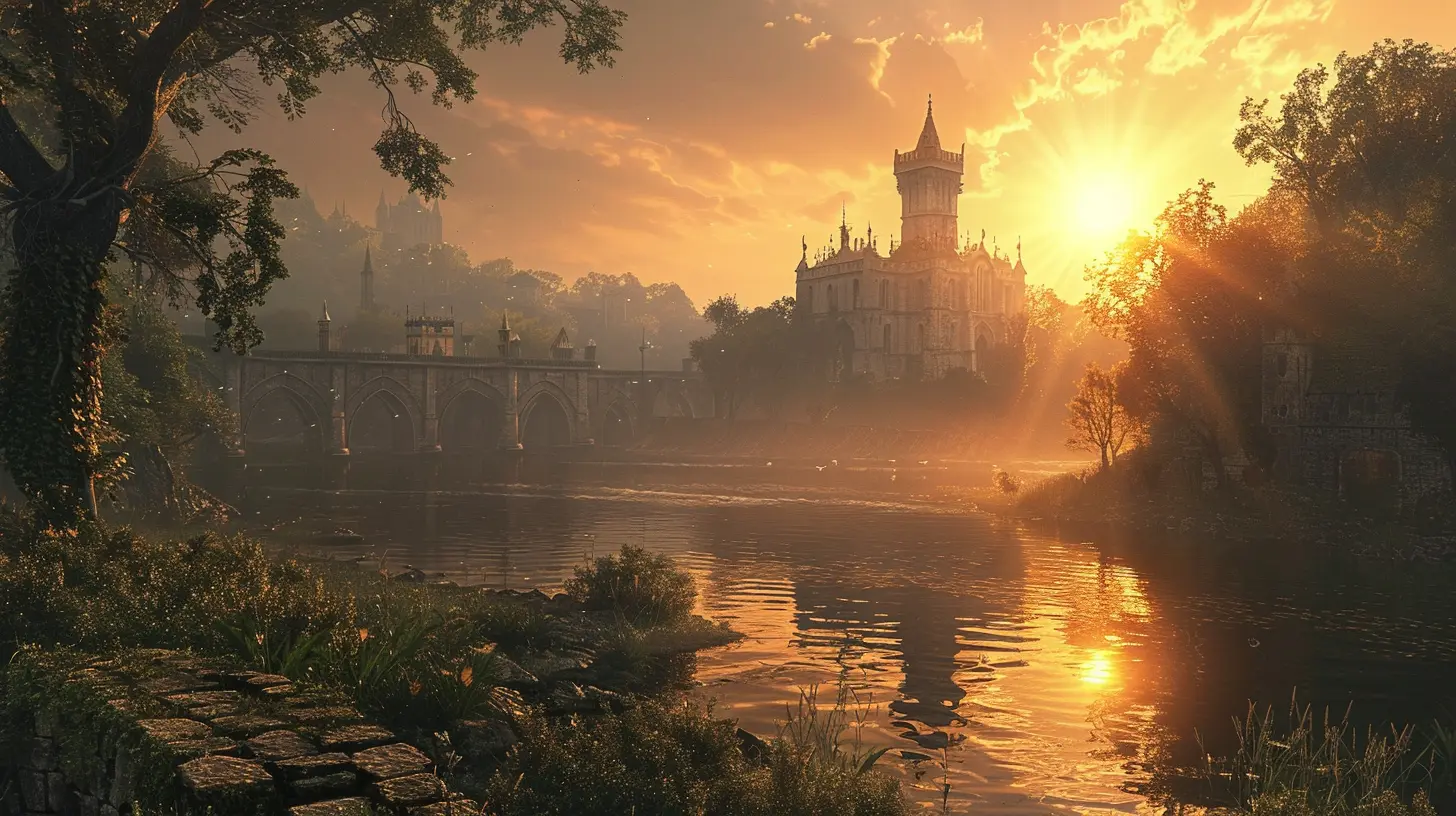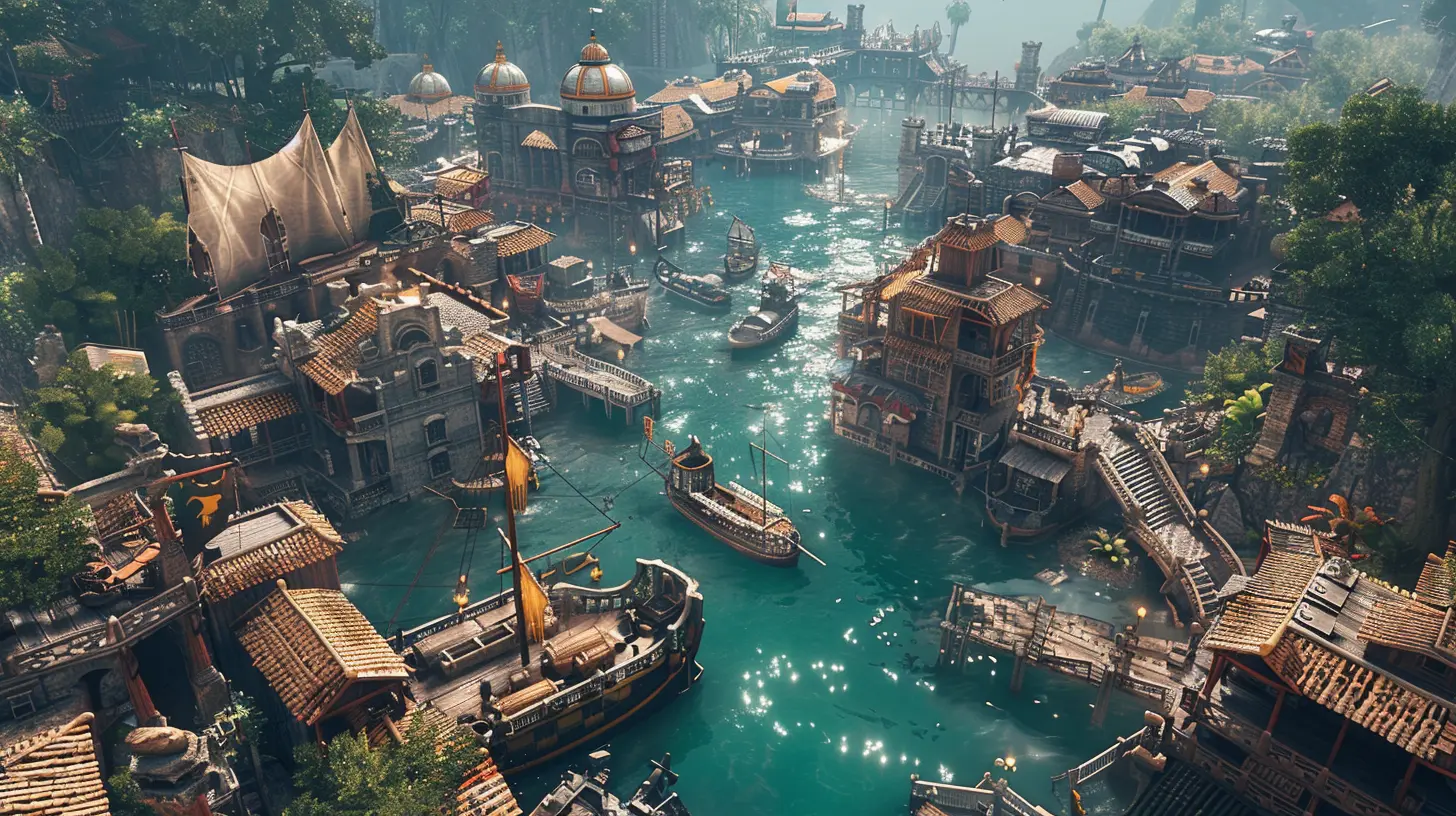Crafting Immersive Worlds: Tips for Creating Engaging Locations in Games
10 December 2024
When was the last time you got completely lost in a game—not because you couldn’t finish a quest, but because the game world was so captivating you didn’t want to leave? That’s the magic of immersive world-building. It’s not just about creating a map or placing random assets around; it’s about building locations that feel alive, believable, and, above all, engaging. Players should feel like they can almost smell the salty sea air of a bustling port town or hear the faint whispers in the shadowy depths of a forgotten forest.
Whether you’re a game designer, an artist, or just someone dreaming of building their own fantasy worlds, nailing the art of immersive environments is crucial. But don’t worry – we’re diving deep into the secrets of crafting unforgettable game worlds. By the end of this, you’ll pick up some actionable tips to create locations players won’t just interact with—they’ll remember. 
Why Immersive Locations Matter
Let’s get one thing straight: a well-crafted world is more than just eye candy. It’s the glue that holds the entire gaming experience together. Think about it. Have you ever played a game where the story was great but the environment felt...meh? It’s like watching a blockbuster on a grainy old TV—it takes you out of the experience.Immersive locations deepen the emotional connection. They set the tone, amplify the narrative, and serve as the backdrop for memorable adventures. Even in sandbox games with little to no plot, the environment tells its own stories. Skyrim’s misty peaks and Fallout’s desolate wastelands remain etched in our minds because they make us feel something. That’s the goal: to evoke emotion.
So, how do you create locations with that kind of staying power? Glad you asked. 
1. Start With a Purpose
Every location in your game should serve a purpose. And by purpose, I don’t just mean it exists because the player needs to fetch ten wolf pelts. Ask yourself:- What’s the story behind this location?
- How does it tie into the world’s lore?
- Why would anyone (player or NPC) care about this place?
For example, instead of throwing together a generic swamp, think about its history. Was it once a thriving village that was cursed? Or maybe it’s home to rare herbs coveted by alchemists, making it a hotbed for rival factions. The purpose dictates design. 
2. Details, Details, Details
Okay, here’s the deal: details matter. Whether it’s the rust on a knight’s armor or the graffiti scrawled on a cyberpunk skyscraper, the little things make a world feel lived-in.Think about the everyday stuff. A bustling marketplace might include vendors shouting over each other, guards pacing around, and stray cats darting between crates. A haunted mansion might have cobwebbed chandeliers, ominous portraits with eyes that seem just a little too lifelike, and floorboards that creak just a second after you step on them.
Details don’t just fill empty space—they tell a story. They hint at what’s happened in the world and who’s been there before. 
3. Play With Atmosphere
Ah, atmosphere. The secret sauce of immersion. It’s not just about what players see; it’s about what they feel. Atmosphere combines lighting, sound, and even pacing to set the mood.Want to create suspense? Dim the lighting, throw in an unsettling soundtrack with faint whispers, and make players feel like they’re being watched. Want to inspire awe? Open up a sprawling vista drenched in golden sunlight, paired with majestic orchestral music.
Games like The Legend of Zelda: Breath of the Wild nail atmosphere. Remember the first time you stood atop a cliff and looked out at that massive, open world? The gust of wind, the soft hum of nature—it’s a masterclass in making a player feel something.
4. Embrace Verticality
Here’s a tip that’s often overlooked: think in three dimensions. A flat map is functional, sure, but it’s also predictable. The real world isn’t just a series of flat planes, so why should your game be?Add verticality to your locations. Mountains, cliffs, ravines, towering buildings—these elements force players to view the environment differently. Verticality also introduces gameplay opportunities. Maybe players need to climb a ledge to scout an area, or perhaps they can stumble into hidden treasures by diving into underwater caverns.
Games like Assassin’s Creed and Hollow Knight make stunning use of vertical design, offering layered environments that feel expansive and multi-dimensional.
5. Interactive Environments Are Key
Let’s be real: static environments are boring. Sure, they can look pretty, but players quickly lose interest if they can’t interact with them. Make your locations reactive and dynamic.For instance, a forest isn’t just a collection of trees—it’s a space where leaves rustle as you brush past, animals dart away at your approach, and footsteps squelch if it’s muddy. Consider environmental puzzles, destructible objects, and weather effects that impact gameplay.
Red Dead Redemption 2 is a prime example of interactivity done right. Every location feels touchable—from the way snow compresses underfoot to how NPCs respond to your presence in town.
6. Variety Keeps Things Fresh
No one wants to wander through a world that looks the same for hours on end. Variety keeps players engaged and curious.If your game is set in a sprawling open world, diversify your locations. Include vibrant cities, tranquil forests, harsh deserts, and eerie ruins. Each area should have its own distinct personality. Think of games like Elden Ring or The Witcher 3. You never know what kind of breathtaking new environment you’ll stumble into next—and that’s half the fun.
7. Tell Stories Through The Environment
Environmental storytelling is one of the most powerful tools at your disposal. It allows players to piece together the world’s history without relying on exposition or dialogue.A desolate village with overturned carts and scorch marks on the walls tells a story of an attack. A frozen cave filled with abandoned mining equipment hints at an operation that went horribly wrong. The trick is to trust your players to connect the dots.
One excellent example of environmental storytelling is Dark Souls. That game rarely spoon-feeds lore, but every broken statue, crumbling castle, and empty throne oozes narrative. It’s subtle, but it makes the world feel tangible.
8. Don’t Forget Cultural Flavors
Cultures and civilizations add a layer of richness to your locations. When designing a city or settlement, think about who lives there and how their way of life shapes the architecture, traditions, and even the food.For example, a desert town might have buildings with thick walls and small windows to keep out the heat, while a coastal village could feature houses on stilts to protect against flooding. Add unique festivals, folktales, and dress styles to make each culture feel real.
Games like Horizon Zero Dawn do a fantastic job showcasing diverse cultures within a single game world. Each tribe feels distinct, with its own identity and traditions.
9. Pace Your World Design
Here’s something a lot of designers overlook: pacing isn’t just for stories—it applies to world design, too. Bombarding players with back-to-back epic locations might seem like a good idea, but it can lead to sensory overload.Balance is key. Mix grand, awe-inspiring environments with quieter, more intimate spaces. A serene mountain cabin or a sleepy fishing village can provide players with much-needed breathing room before diving back into an epic dungeon or sprawling battlefield.
10. Incorporate Player Choice
Finally, give players the power to leave their mark on the world. Dynamic locations that change based on player choices are unforgettable.For example, maybe a distant castle can fall into ruin or flourish, depending on decisions the player makes. Perhaps an NPC’s shop evolves over time, selling better items if you invest in their business. These changes reinforce the idea that the player’s actions matter in the grand scheme of the world.
Games like Fable and Divinity: Original Sin 2 are great examples of this. The world feels truly alive because it reacts to what you do.
Final Thoughts
Crafting immersive worlds is no small feat, but it’s one of the most rewarding aspects of game design. Think of your locations as more than just “places” and instead treat them as living, breathing characters in your story. Give them purpose, sprinkle in details, and don’t be afraid to experiment with verticality, interactivity, and player choice.And remember: the best worlds aren’t just seen—they’re felt. So, if you can touch your players’ emotions through your environments, you’ve already won half the battle.
all images in this post were generated using AI tools
Category:
World BuildingAuthor:

Greyson McVeigh
Discussion
rate this article
15 comments
Sarina Ruiz
Great article! Crafting immersive worlds is essential for player engagement. I particularly enjoyed the tips on integrating environmental storytelling and unique landmarks. These elements truly enhance the gaming experience and leave a lasting impression on players.
February 2, 2025 at 3:22 PM

Greyson McVeigh
Thank you for your thoughtful feedback! I'm glad you found the tips on environmental storytelling and landmarks helpful for enhancing player engagement. Happy crafting!
Sophie Rivera
This article provides valuable insights for game developers aiming to create captivating environments. The tips on atmosphere, detail, and player interaction are particularly useful for enhancing immersion. A great read for anyone looking to elevate their game design skills!
February 1, 2025 at 5:12 AM

Greyson McVeigh
Thank you for your kind words! I'm glad you found the tips helpful for enhancing game environments. Happy developing!
Clarissa Sanders
Enchanting realms await—imagination breathes life into pixels.
January 27, 2025 at 3:19 AM

Greyson McVeigh
Thank you! Imagination truly transforms our creations into captivating experiences.
Brianna Rios
Great insights! Excited to see worlds come alive!
January 23, 2025 at 5:21 PM

Greyson McVeigh
Thank you! I'm glad you enjoyed it—excited for you to bring your worlds to life!
Andrea Howard
Great read! Crafting immersive worlds is such an art. I love how small details can make a huge difference in player engagement. Can’t wait to apply these tips to my next project!
January 20, 2025 at 4:49 PM

Greyson McVeigh
Thank you! I'm glad you found the tips helpful—best of luck with your project!
Izaak McKeever
This article highlights essential elements for crafting immersive game worlds. I appreciate the focus on environmental storytelling and player interaction. Effective world-building truly enhances the gaming experience, making it more memorable and engaging for players.
January 18, 2025 at 3:27 PM

Greyson McVeigh
Thank you for your thoughtful feedback! I'm glad you found the focus on environmental storytelling and player interaction valuable for enhancing the gaming experience.
Nora McElroy
Every corner holds a secret; every shadow, a story. Dive deeper, for the most enchanting worlds often hide their mysteries in plain sight.
January 15, 2025 at 5:54 PM

Greyson McVeigh
Absolutely! The magic of immersive worlds lies in their hidden details. Embrace the secrets and stories within your locations to captivate players and enrich their experience.
Galina McCallum
Great insights! Crafting immersive locations truly enhances player experience and engagement. Excited to implement!
January 13, 2025 at 4:57 AM

Greyson McVeigh
Thank you! I'm glad you found the insights helpful. Enjoy implementing them!
Seraphis Kearns
“Creating immersive worlds is like making a sandwich—layer it well! Add some spicy quests, crunchy characters, and a hint of mystery. Just don’t forget the pickles (or the lore)!” 🍕🎮
January 10, 2025 at 5:43 PM

Greyson McVeigh
Absolutely! Just like a great sandwich, the key to immersive worlds lies in balancing layers—quests, characters, and lore all enhance the experience. Thanks for the tasty analogy! 🍔✨
Joel McLaurin
This article offers fantastic insights into world-building! The tips for creating immersive environments are both practical and inspiring. I especially loved the emphasis on incorporating player choices and environmental storytelling—these elements truly enhance engagement and make locations feel alive. Great read!
January 8, 2025 at 5:20 PM

Greyson McVeigh
Thank you so much for your kind words! I'm thrilled to hear that you found the tips on player choices and environmental storytelling inspiring. Happy world-building!
Zain McPhee
Creating immersive game worlds hinges on attention to detail and emotional resonance. By intertwining lore, environmental storytelling, and player choices, developers can breathe life into locations, transforming them into memorable experiences that captivate and inspire exploration.
January 3, 2025 at 4:19 PM

Greyson McVeigh
Absolutely! Attention to detail and emotional resonance are key to crafting immersive game worlds. By blending lore, environmental storytelling, and meaningful player choices, we can create captivating locations that inspire exploration and memorable experiences. Thank you for your insights!
Pia McMaster
Great insights! Immersive worlds truly enhance gameplay. These tips will help developers create more engaging and memorable locations for players.
December 30, 2024 at 5:42 AM

Greyson McVeigh
Thank you! I'm glad you found the tips helpful for creating more engaging game worlds. Your feedback is much appreciated!
Isla McGlynn
Make it immersive or just stick to cardboard boxes!
December 21, 2024 at 4:11 AM

Greyson McVeigh
Thank you for your comment! Immersion is key, and I believe even simple elements can enhance depth. Happy crafting!
Nicole Jones
Great insights! Crafting immersive worlds is crucial for player engagement. Your tips on environmental storytelling and attention to detail are particularly valuable for developers.
December 14, 2024 at 3:35 AM

Greyson McVeigh
Thank you! I'm glad you found the tips helpful for enhancing player engagement through immersive world-building.
Coral Lee
Your insights are invaluable! Thank you for inspiring our creative journeys.
December 10, 2024 at 3:22 PM

Greyson McVeigh
Thank you so much! I'm glad you found the insights helpful for your creative endeavors!
MORE POSTS

Why Retro Games Are Still So Hard to Beat

Most Rewarding Games with Deep Progression Systems

The Creative Freedom of Sandbox Simulation Games

Top Tips for Running a Successful Kickstarter Game Campaign

Hidden Gems: Underrated Arcade Games You Need to Try

Retro Revival: Modern Games with a Vintage Feel

How to Navigate the Risks of Backing Kickstarter Games

Exploring the Most Ambitious Kickstarter Game Projects

Building the Ultimate PC for Gaming on a Budget

Atmospheric Excellence: How Audio Plays a Role in Game Immersion